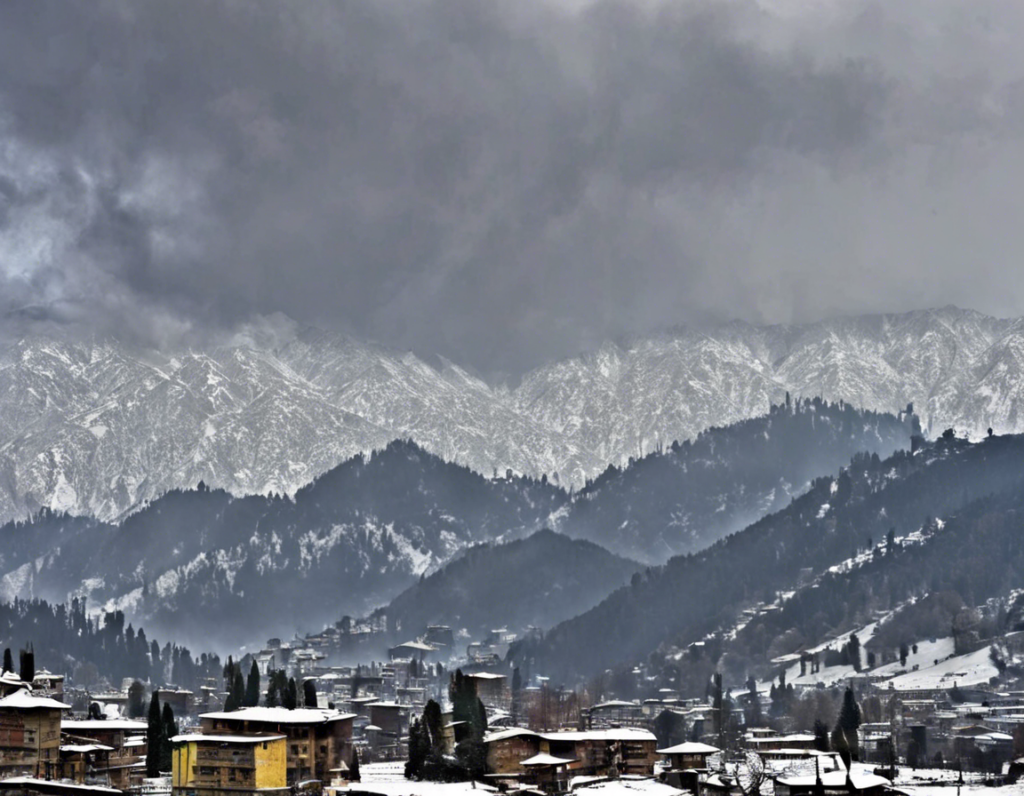Nestled in the northern region of India, Kashmir is renowned for its breathtaking landscapes, serene lakes, and vibrant culture. One of the key factors that significantly shapes the experience of visiting Kashmir is its seasonal changes. Understanding the various seasons and their impact on the weather can help travelers make the most of their trip to this enchanting destination. In this guide, we will delve into the unique characteristics of each season in Kashmir, providing insights into what to expect and how to prepare for different weather conditions.
Understanding the Four Seasons in Kashmir
Spring
Spring in Kashmir, spanning from March to May, is a time of rejuvenation and blossoming. The valley comes to life with a riot of colors as the cherry blossoms, tulips, and daffodils bloom in full glory. The weather during spring is pleasant, with temperatures ranging from 10°C to 20°C. It is an ideal time for nature lovers and photographers to explore the lush gardens of Srinagar, such as the iconic Shalimar Bagh and Nishat Bagh.
Summer
As the summer season sets in from June to August, Kashmir experiences warmer weather with temperatures ranging between 25°C to 35°C. This season is characterized by longer days, providing ample opportunities for outdoor activities like trekking, river rafting, and camping. The cool breeze from the surrounding mountains offers respite from the heat, making it a popular time for tourists to visit destinations like Gulmarg and Pahalgam.
Autumn
Autumn, also known as the fall season, graces Kashmir from September to November. The landscape transforms into a picturesque canvas painted in shades of gold and crimson as the Chinar trees shed their leaves. The weather during autumn is crisp and cool, with temperatures ranging from 10°C to 20°C. This season is perfect for leisurely strolls along the iconic Dal Lake and indulging in traditional Kashmiri cuisine like Wazwan.
Winter
Winter in Kashmir, spanning from December to February, is a magical time when the entire valley is blanketed in a pristine layer of snow. Temperatures during winter can drop to -2°C to 10°C, creating a winter wonderland that attracts tourists from far and wide. Skiing, snowboarding, and sleigh rides are popular winter activities in destinations like Gulmarg and Sonamarg. It is essential for visitors to bundle up in warm clothing and prepare for occasional road closures due to heavy snowfall.
Tips for Exploring Kashmir in Different Seasons
-
Spring: Pack layers of clothing to adjust to fluctuating temperatures. Don’t forget to carry an umbrella or raincoat for occasional showers.
-
Summer: Stay hydrated and wear sunscreen to protect your skin from the sun. Opt for light and breathable clothing for maximum comfort.
-
Autumn: Capture the stunning fall foliage with your camera and savor traditional Kashmiri tea (Kahwa) to stay warm in the cool weather.
-
Winter: Dress in layers with thermals, woolens, and a sturdy winter jacket. Keep essentials like hand warmers and lip balm handy to combat the cold.
Frequently Asked Questions (FAQs)
1. When is the best time to visit Kashmir?
The best time to visit Kashmir depends on personal preferences. Spring and autumn are ideal for pleasant weather and beautiful landscapes. Summer is perfect for outdoor activities, while winter attracts snow enthusiasts.
2. Is it safe to visit Kashmir due to its geopolitical situation?
While the region has experienced unrest in the past, tourist areas in Kashmir are generally safe for visitors. It is advisable to stay informed about the current situation and follow any travel advisories issued by the authorities.
3. What should I pack for a trip to Kashmir?
Pack according to the season of your visit. Essentials include warm clothing, comfortable footwear, sunscreen, sunglasses, camera, portable charger, and any necessary medications.
4. Are there any cultural etiquettes I should be aware of in Kashmir?
Respect the local culture by dressing modestly, removing shoes before entering homes or religious sites, and seeking permission before taking photographs of locals.
5. Can I try skiing in Kashmir if I am a beginner?
Yes, there are skiing instructors and beginner slopes available in destinations like Gulmarg that cater to novice skiers. It’s essential to follow safety instructions and wear appropriate gear.
6. How do I travel within Kashmir to explore different regions?
Options for transportation in Kashmir include taxis, buses, rented cars, and auto-rickshaws. It’s advisable to plan your itinerary in advance and book transportation as needed.
7. What are some must-visit attractions in Kashmir?
Popular attractions in Kashmir include the Dal Lake, Gulmarg Gondola, Mughal Gardens, Shankaracharya Temple, Sonamarg, Pahalgam, and the floating market on Dal Lake.
8. Is it necessary to acclimatize to the high altitude in Kashmir?
If you are traveling to higher-altitude destinations like Gulmarg or Sonamarg, it is advisable to acclimatize gradually to prevent altitude sickness. Stay hydrated and avoid strenuous activities upon arrival.
9. Are there any local festivals or events worth experiencing in Kashmir?
Events like the Tulip Festival in Srinagar, Hemis Festival in Ladakh, and Shikara Festival on Dal Lake offer unique cultural experiences that showcase the traditions and heritage of Kashmir.
10. How can I ensure a comfortable stay in Kashmir during my trip?
Book accommodations in advance, choose homestays to experience local hospitality, and opt for hotels that offer heating facilities during the winter months to ensure a cozy and comfortable stay.
Exploring Kashmir across its various seasons unveils a tapestry of natural beauty and cultural richness, making it a destination that captivates visitors throughout the year. Whether you seek the vibrant hues of spring, the adventures of summer, the tranquility of autumn, or the enchantment of winter, Kashmir offers a delightful journey for every traveler. Embrace the seasonal changes, immerse yourself in the local charm, and create unforgettable memories in this paradise on Earth.
